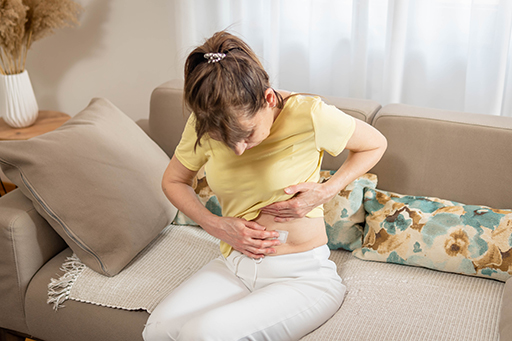3.2 Hormone Replacement Therapy (HRT)
‘There is a need to improve knowledge about the long-term benefits and risks of HRT. No other treatment has been shown to be as effective as HRT for menopausal symptoms, though the balance of risks and benefits varies among women.’
HRT is taken to alleviate the symptoms associated with the menopause and allow people to feel like their pre-menopausal selves. HRT had its beginnings in the 1960s but gained in popularity during the 1990s. Initially, it was lauded as the answer to the menopause and was widely prescribed. However, a 2002 report, the Women’s Health Initiative Study, drew links between HRT use and breast cancer which scared many into stopping their HRT, as well as discouraging GPs from prescribing it.
Activity 3 Hormone Replacement Therapy
Watch this film from the British Menopause Society in which Kathy Abernethy talks about HRT, what it is and how it is used:
Then answer the following questions:
- How is HRT taken?
- What are the benefits of taking HRT?
- Are there any side effects to HRT?
Comment
HRT can be taken in the form of pills, patches, or gels. Patches are often favoured as they are slow releasing and means that it is less likely that medication is missed.
Apart from improving the symptoms of the menopause the reintroduction of hormones will benefit the cardiovascular system, bone health, cognition, and memory. There can be side effects in that it can initially cause headaches and breast tenderness, but these often subside or can be mitigated by the doctor altering the dose.
As mentioned before a 2002 study linked HRT to breast cancer but this link has since been discredited. There were huge flaws in this study, such as the sample group having an average age of 63 and already had significant risk factors for cancer. For example, 50% of them were either smokers or ex-smokers, over a third had been diagnosed with high blood pressure and 70% were overweight or obese (Langer et al, 2021).
Also it is really important to say that the type of oestrogen and progesterone taken were very different to the type taken today. The oestrogen was derived from pregnant horses’ urine and the progesterone was synthetic. In contrast the HRT taken today is ‘body-identical’ and much safer (Langer et al, 2021). As with any drug there can be a risk to health and factors such as age, weight, smoking status and alcohol intake can increase the risk of taking HRT. This is why it is so important that women have an individual consultation with a doctor before making any decisions around HRT(Newson, 2023).

